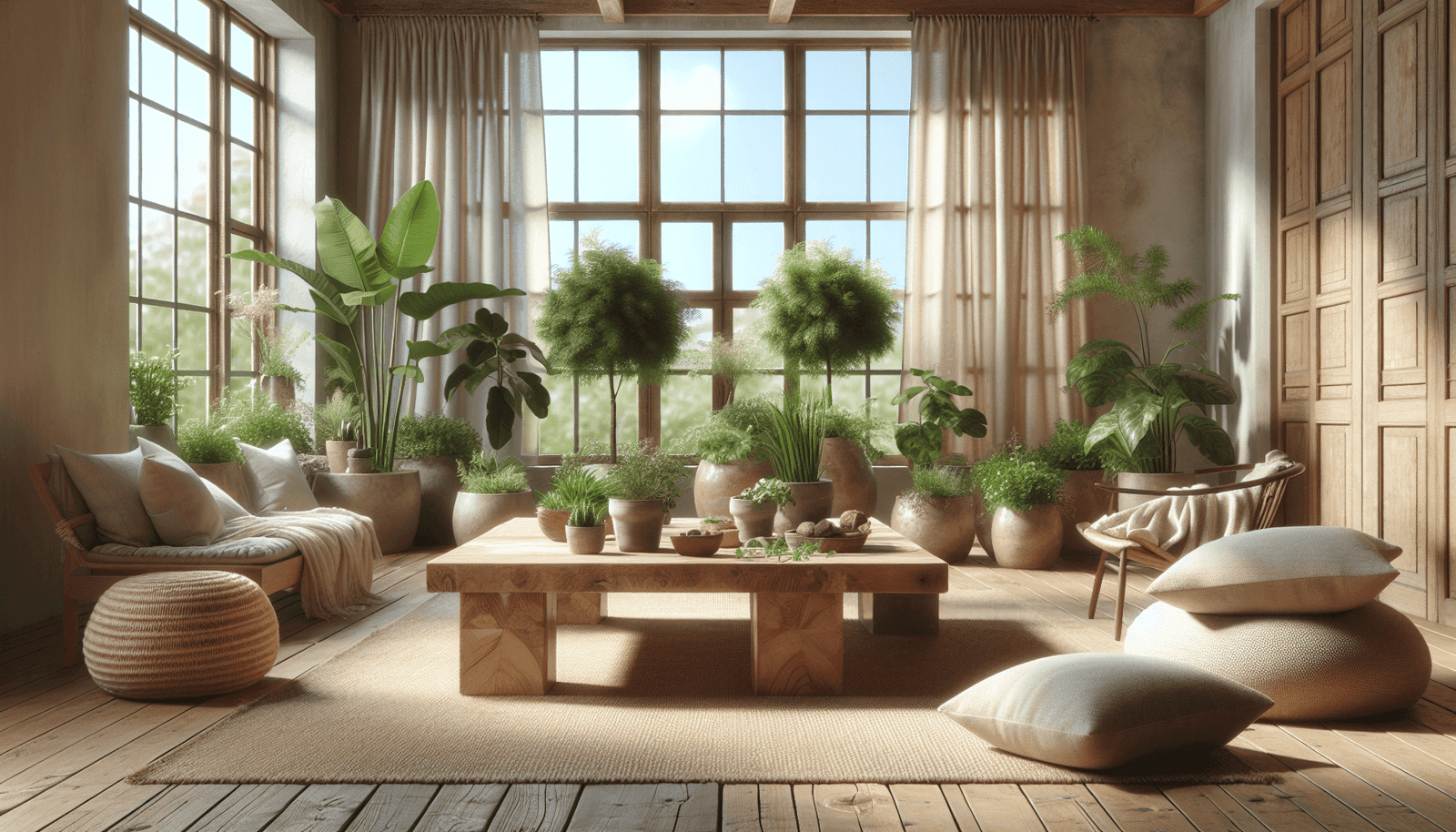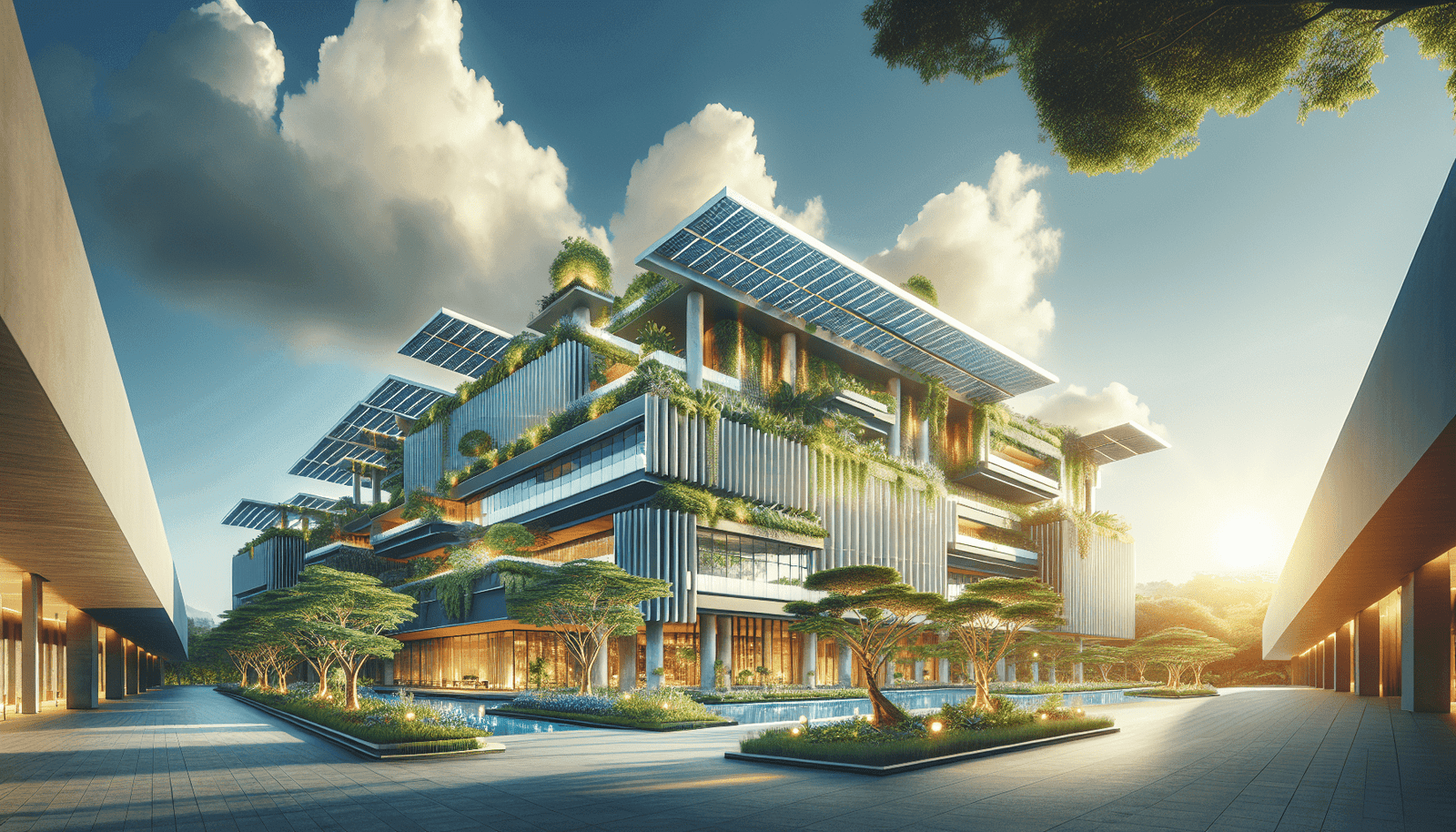Sustainable Interior Design Practices

From AI integration to cross-platform fluency—discover the must-have technical and soft skills for today’s most in-demand dev roles.
by
Have you ever wondered how the spaces we inhabit affect not only our well-being but also the planet? As we consider our living and working environments, we may begin to see the importance of integrating sustainability into interior design. In this discussion, we will share insights into sustainable interior design practices and how these can create healthier spaces for us, our families, and the world around us.
Understanding Sustainable Interior Design
Sustainable interior design is all about creating spaces that reduce environmental impact while simultaneously enhancing human health and well-being. This approach takes into account a variety of factors, including the materials we choose, the energy consumption of our spaces, and how we manage waste. By focusing on sustainability, we can create beautiful interiors that are not only stylish but also responsible and mindful of the environment.
Why Sustainability Matters
The growing awareness of climate change and environmental degradation has prompted many of us to rethink our consumption habits. In our interiors, the choice of materials can significantly impact the environment. Sustainable practices in interior design help to minimize waste, lower carbon footprints, and promote the use of renewable resources, thus helping us foster a more sustainable future.
The Benefits of Sustainable Interior Design
Opting for sustainable interior design practices provides various benefits that resonate with both personal and communal levels. Some of these benefits include:
- Healthier Indoor Environments: By using non-toxic materials and improving air quality, we can create spaces that promote our well-being.
- Energy Efficiency: Sustainable design encourages the use of energy-efficient systems and products, ultimately resulting in lower utility bills.
- Long-term Cost Savings: While sustainable options may have a higher initial cost, they often lead to savings in the long run due to reduced energy consumption and lower maintenance costs.
- Enhanced Aesthetics: Sustainable designs can be incredibly beautiful and innovative, showcasing the best of what nature has to offer.
Key Principles of Sustainable Interior Design
To help us navigate the world of sustainable interior design, we can outline several key principles that serve as a foundation for making thoughtful choices.
1. Use of Eco-Friendly Materials
When we choose materials for our interiors, we should prioritize eco-friendly options. These include:
| Material Type | Eco-Friendly Options |
|---|---|
| Flooring | Bamboo, reclaimed wood, cork |
| Paints and Finishes | Low or zero-VOC paints, natural finishes |
| Fabrics | Organic cotton, hemp, linen |
| Insulation | Recycled denim, cellulose, sheep’s wool |
Opting for these materials can significantly reduce the negative impact on the environment and improve the quality of the spaces we inhabit.
2. Energy Efficiency and Conservation
Designing with energy efficiency in mind is crucial for sustainable interiors. We can achieve this through:
- Natural Light Utilization: Maximizing natural light can help us reduce our reliance on artificial lighting, which in turn saves energy.
- Energy-Efficient Appliances: Incorporating appliances that have high energy ratings helps us to use less energy while maintaining functionality.
- Smart Home Technology: The use of smart thermostats and energy management systems allows us to monitor and control our energy consumption.
By making these conscious choices, we can create an environment that not only looks great but also operates efficiently.
3. Water Conservation
Water is a precious resource, and incorporating water-saving practices in interior design is essential. We can consider:
- Low-Flow Fixtures: Installing low-flow faucets and showerheads can massively cut down on water usage.
- Rainwater Harvesting: If possible, we can implement systems that allow us to collect and reuse rainwater for non-potable purposes.
- Sustainable Landscaping: Choosing plants that require less water for landscaping can further enhance water conservation efforts.
These small steps can contribute toward a more sustainable approach both inside and outside our homes.
Sustainable Interior Design Strategies
Now that we have discussed the principles of sustainable interior design, let’s look at specific strategies that we can adopt to create eco-friendly interiors.
1. Upcycling and Repurposing
One effective practice in sustainable interior design is upcycling. This involves taking old furniture or materials and transforming them into something new and functional. Here are a few ideas to consider:
| Upcycling Idea | Description |
|---|---|
| Pallet Furniture | Using wooden pallets to create tables, chairs, etc. |
| Old Doors as Tables | Repurposing old doors to make unique tabletops |
| Vintage Fabric for New Items | Recovering furniture using vintage or thrifted fabrics |
By upcycling, we not only reduce waste but also add character and uniqueness to our spaces.
2. Biophilic Design
Biophilic design incorporates elements of nature into our interiors, which has been shown to benefit our mental and physical health. This design approach can include:
- Indoor Plants: Introducing greenery into our spaces helps to improve air quality and increase overall well-being.
- Natural Materials: Using stone, wood, or other natural elements in our decor creates a connection to the outdoors.
- Views of Nature: Designing spaces where we can easily see natural landscapes encourages relaxation and peace.
By embracing biophilic design, we can create a more harmonious relationship with our environments.
3. Modular Furniture
Modular furniture offers flexibility and adaptability, making it a sustainable option for interior design. The benefits include:
- Reduced Waste: Instead of discarding pieces we no longer need, modular furniture allows us to reconfigure or add to existing pieces.
- Customization: We can tailor our furniture to fit our specific needs and available space, ensuring optimal use.
- Longevity: High-quality modular pieces can withstand wear and tear, leading to longer lifespans and reduced replacement needs.
This approach facilitates a more sustainable way of furnishing our spaces.
4. Choosing Local Products
When we opt for locally sourced products, we not only support local economies but also reduce the carbon footprint associated with transportation. Here’s how we can maximize local sourcing:
| Item Type | Local Sourcing Options |
|---|---|
| Furniture | Local artisans and workshops |
| Decor | Artisan markets and craft fairs |
| Fabrics | Regional textile mills and suppliers |
By prioritizing local products, we can create unique and culturally rich interiors that reflect our community while benefiting the environment.
Integrating Sustainable Practices into Everyday Life
Adopting sustainable interior design practices is a journey, and we can integrate these into our daily lives in various ways. Let’s look at how we can maintain these practices consistently.
1. Regular Cleaning and Maintenance
Sustainable interiors require care and attention. Regular cleaning and maintenance can prolong the lifespan of our furniture, flooring, and other installations. We can adopt:
- Eco-Friendly Cleaning Products: Using biodegradable and non-toxic cleaners can help maintain both our space and the environment.
- Routine Maintenance Checks: Keeping an eye on our appliances and fixtures ensures they work efficiently, reducing waste and energy consumption.
This approach keeps our interiors looking good and functioning well.
2. Educating Ourselves and Others
Staying informed about sustainable practices and developments in interior design empowers us to make better choices. Some strategies include:
- Joining Workshops: Participating in workshops or webinars focused on sustainable design can broaden our understanding and inspire fresh ideas.
- Sharing Knowledge: Discussing what we’ve learned with friends, family, and colleagues helps to spread awareness and foster a culture of sustainability.
By engaging in continuous learning and sharing our knowledge, we contribute to a collective effort toward sustainability.
3. Sustainable Renovation Practices
If we decide to take on renovations, keeping sustainability at the forefront can guide our decisions. Some considerations might be:
- Using Salvaged Materials: Incorporating salvaged materials for new construction can greatly reduce waste.
- Energy-Efficient Upgrades: When updating lighting or heating systems, choosing energy-efficient options can have lasting benefits.
- Minimizing Waste: Being mindful about what materials go into renovations can help keep more items out of landfills.
By embracing sustainable renovation practices, we can ensure that our spaces are up-to-date with the latest eco-friendly standards.
Conclusion: Our Role in Sustainable Interior Design
In our journey towards sustainable interior design, it’s essential to recognize the role we play in shaping our environments. We can make a positive impact by understanding the principles, strategies, and practices that contribute to sustainability in our interiors. While the changes we adopt can start small, collectively, they lead to significant strides in preserving our planet for future generations. As we take these steps, we can create not only beautiful and functional spaces but also a healthier and more sustainable world for ourselves and our loved ones. Together, let’s nurture our spaces with care, intention, and a focus on sustainability.


